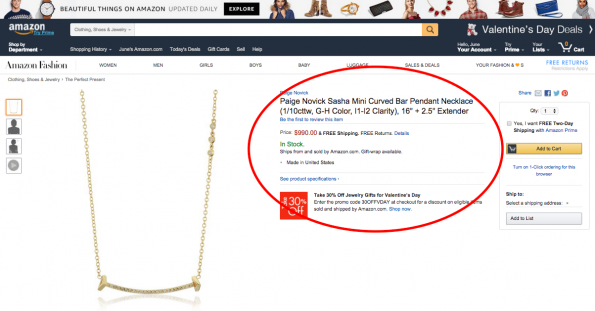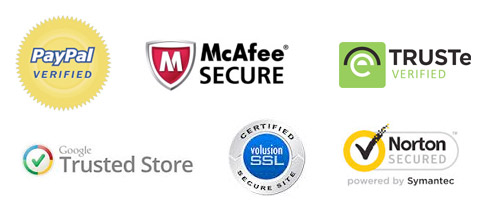19 Trust Indicators To Boost Your eCommerce Store Conversions
Your website is arguably the single, most important element that can vouch for your business these days. How it looks and works will lend itself to building that all-important first impression.
With that in mind, the goal therefore is to build a website that ensures visitors will convert into paying customers—who will trust your website enough that they are willing to give their personal details and financial information. The question is, does your website show your company’s inherent qualities of credibility and reliability?
Here we have got 21 things divided into 4 categories (Design, Content, Security & Social Media) that will help your ecommerce site build trust among your visitors—
A.) Design
First thing’s first—get your site’s design right. A cheap, haphazardly designed site will reflect on your brand, your company, your products. Put a little effort into getting quality web design.
Here’s a checklist that you can use:
1. Are sections arranged neatly but still creatively presented? Does your site have a clear layout complemented by good navigational aids?
2. Is your website designed so that it communicates immediately what you are offering?

An ecommerce landing page should clearly communicate what the site is all about.
3. Are the featured product images professionally photographed?

Professionally taken product images help boost trust and credibility for your ecommerce site.
4. Do you have personalized design elements on your landing page such as a professional and exclusive logo?

Personalized and exclusive design elements add a sense of professionalism that builds trust among site visitors.
5. Do you offer a variety of images of your products that users can browse through?
6. Do your product pages offer a brief but informative description and options for user ratings?
Make sure that your site not only looks great, but that it also functions properly too. A big part of your website’s design is focused on the navigation. You want it to be simple, straightforward and easy to follow.
In terms of user experience…
7. Is your website easily navigable?

Make sure your ecommerce site’s navigation is simple and easy to follow.
8. Can users easily search for what they want and need?

Keep your search bar visible and prominent.
9. Does it offer seamless transaction process?
Keep the user experience in mind when you’re designing how you want the site to look and feel. Organize everything so that they don’t have to second-guess their way around your site and they’re likely to follow through on that purchase.
B.) Content
After users take in the visuals of your website, it’s all about what you have to say.
It almost goes without saying but it can’t hurt to be reminded that:
10. Sloppy copy peppered with typos, grammar and spelling errors can turn users off from your site.
There’s also the matter of content volume to consider—too much can also prompt visitors to just bounce. The secret is to keep content in small, bite-sized pieces that your users can easily take in and process. If in doubt, hire a professional copywriter to draft your content to impart the sense that you take every facet of your website seriously.

Avoid giving your visitors a wall text to read on your product pages. Keep it brief and clear–but make sure you provide all necessary details.
11. Users, first time visitors especially, will judge your site based on their first contact with your business, and that’s typically your website’s landing page. And when they do find themselves on your site, you have a very short window to capture their attention and show them that your site can be trusted.
Know that they won’t read through every bit of copy, no matter how well written it is. So what you want to do is provide catchy headlines, complemented with an appropriate image that will prompt them to explore further into your site.
To do that…
12. Provide well-written information but keep it brief.
13. Use clear, simple language and use readable fonts.
Once they’re on your product pages…
14. Prominently feature important purchasing information–how much stock is left, exclusive discounts, shipping details etc.

Provide important product details.
C.) Security
This is a major barrier that most users and potential customers that consider. When it comes to ecommerce sites and the need to provide their name and financial details, you need to reassure them that their private, sensitive data will be kept private and that your site has all the essential security measures in place to ensure this. Make sure that your security policy can easily be found on your website and keep your security badges visible.

Trust symbols such as these familiar, online security badges help build trust among users.
A few tips:
15. Sign up for accreditation programs that allow you to display security badges to help assure customers that their data remains secure.
16. Get a private SSL certificate and assure customers, in black and white, that their purchases or information remains 100% safe and secure.

SSL certificates are standard ways ecommerce sites ensure security for users.
D.) Get Social
Inasmuch as your website becomes the user’s primary basis for your credibility, external sources of information become essential factors for considerations as well.
17. Social media has become a go-to source of information as it shows how the brand interacts with their users so you have to make sure that your Facebook, Twitter, LinkedIn, YouTube etc. pages are all up to date.

Be sure to respond and engage your users–an updated social media page lends to the credibility of your ecommerce site.
18. Testimonials, whether on your website or on your social media pages, are an important reference that will help build your user’s trust for your company.
19. Make sure that you respond quickly and constructively to questions and comments on every available platform as this will reflect on how well you serve your customers and users.
Does your ecommerce site have all these elements? Go through the points and add what you currently don’t have on your website–see how easily you can improve your site’s credibility and built trust with your visitors.
If you have questions, feel free to leave it in the comment section below.
Share This Story
2 Comments
Leave A Comment
Get the latest growth ideas, strategies, and best practices delivered to your inbox.
Quick read that helps 7000+ subscribers.










[…] If you’re new to the whole idea, you can go and check out a previous post we wrote about it here. […]
Most good relationships are built on mutual trust and respect. This is especially true for businesses that literally live on the trust and respect that their customers show to their brand.
Despite the convenience and price economy that eCommerce store can gain certain level of trust from their customers. unconditionally. As they say, “If people like you, they will listen to you. But, if they trust you, they will do business with you.” Perhaps, it is also the one thing that makes eCommerce success despite the virtual environment.